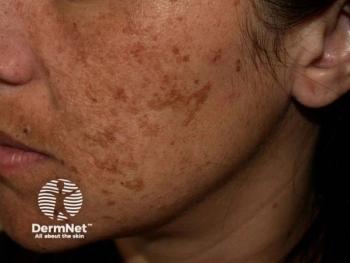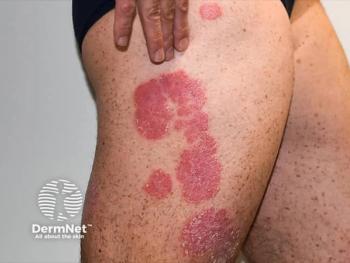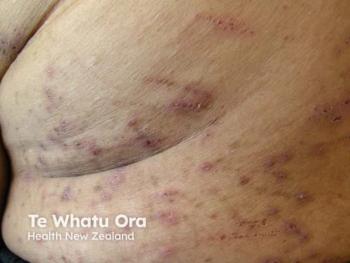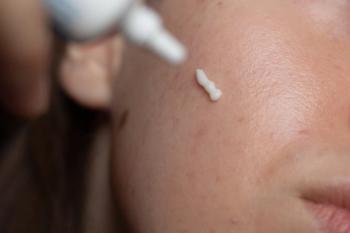
Shea Butter-Based Emollient is Effective for Pediatric Erythema on Diapered Skin
Key Takeaways
- A shea butter-based diaper was as effective as a petrolatum-based diaper in reducing pediatric erythema.
- Participants using the shea butter diaper were more likely to be erythema-free compared to those using non-emollient diapers.
The novel formulation was compared to a petrolatum-based diaper and was found to be just as effective for irritation and redness.
Researchers tested a disposable diaper with an anhydrous, shea butter-based emollient to help treat pediatric erythema.1 This new formulation was compared to a typical petrolatum-based diaper and was found to be similar in reducing redness and irritation.
The 6-week, 2-period, randomized, double-blinded study included healthy participants between 15 and 40 pounds who wore size 4 diapers. All had mild to moderate dermatitis on the diapered area. Investigators compared the shea butter emollient to a petrolatum-based emollient. Both emollients were fairly invisible with no odor or color. They included ingredients like vegetable oil, stearyl alcohol, and aloe barbadensis leaf extract. These were also compared to diapers with no emollient.
All patients used the petrolatum diaper for 3 weeks and then started wearing the shea butter diaper (n = 123), a diaper with no emollient (n = 121), or remained on the petrolatum diaper (n = 27) for 3 more weeks. Parents and caregivers were asked to refrain from using other skin care products during the trial.
Skin erythema was graded by clinical skin graders on a 7-point scale. The product was also tested on adult forearm skin to evaluate erythema, transepidermal water loss, hydration, and irritation levels.
Patients using the shea butter emollient diaper were 2.6 times more likely to have no erythema compared to the non-emollient diaper, especially at the perianal site. When patients switched to the non-emollient diaper, an increase in babies with erythema scores of ≥ 1.5 was observed. These results were present in all regions including the buttocks, genitals, and intertriginous sites.
Both groups with emollient products had a similar proportion of erythema-free patients. This protection was consistent with what was observed in the studies of the adult forearm. No adverse effects, contact allergies, or candidal infections were recorded.
Future studies can further investigate the benefits of shea butter for pediatric erythema as the ingredient has anti-inflammatory and moisturization properties, but these were not analyzed in this trial. The diaper could also be tested on those with more severe dermatitis in diapered areas.
Dermatitis, especially in the diapered area, is the most common skin condition in the first few years of life. With higher amounts of friction and sensitivity, this area of dermatitis has an incidence rate between 16% and 65%.2 Common skin care ingredients for this include petrolatum, glycerin, mineral oil, panthenol, and natural oils like coconut and sunflower. A diaper with a pharmaceutical-grade petrolatum-based emollient in the inner liner became commercially available in the late 1990s. This novel shea-butter based diaper lining shares a similar design and was hypothesized to have the same clinical outcomes.
Overall, both shea butter-based and petrolatum-based diapers had similar results in reducing skin irritation in diapered areas, offering another option for parents, caregivers, and health care providers. According to the authors, “individuals with sensitivities should be attentive to ingredient labels and choose a product according to their tolerance and preference.”
References
1. O'Connor RJ, Visscher MO, Narendran V, Wang Y, Wiesemann F, Carr AN. Clinical Evaluation of a Diaper Containing a Shea Butter-Based Emollient and Impact on Diapered Skin Erythema. Pediatr Dermatol. Published online April 6, 2025. doi:10.1111/pde.15944
2. Jordan WE, Lawson KD, Berg RW, Franxman JJ, Marrer AM. Diaper dermatitis: frequency and severity among a general infant population. Pediatr Dermatol. 1986;3(3):198-207. doi:10.1111/j.1525-1470.1986.tb00513.x
Newsletter
Like what you’re reading? Subscribe to Dermatology Times for weekly updates on therapies, innovations, and real-world practice tips.


















